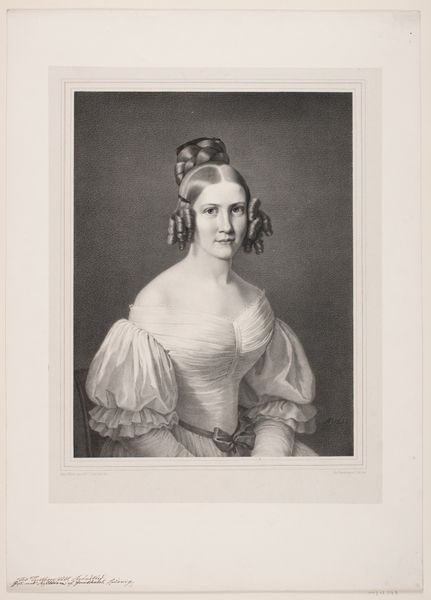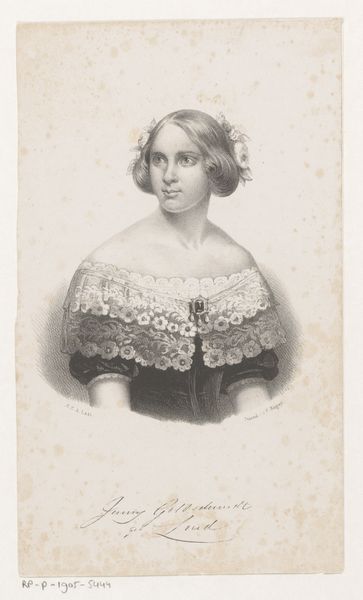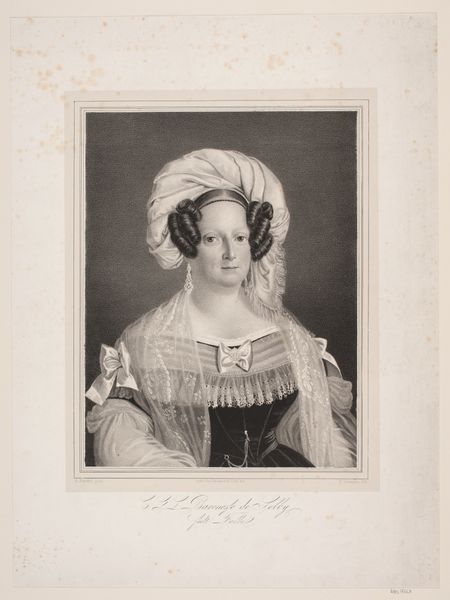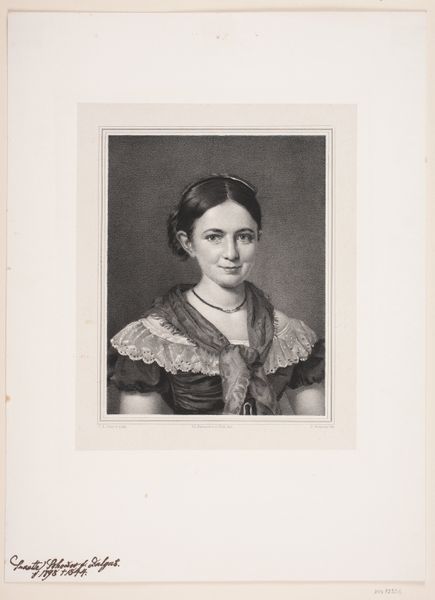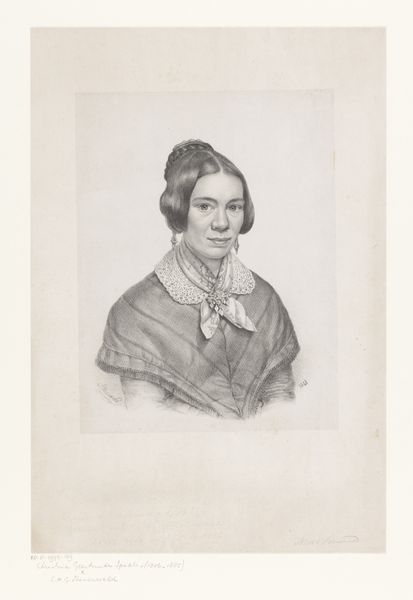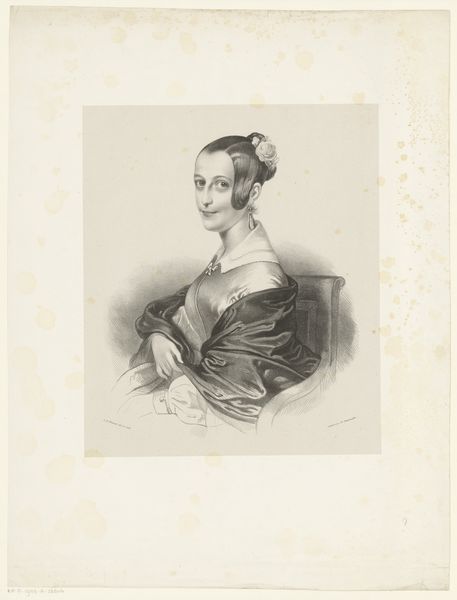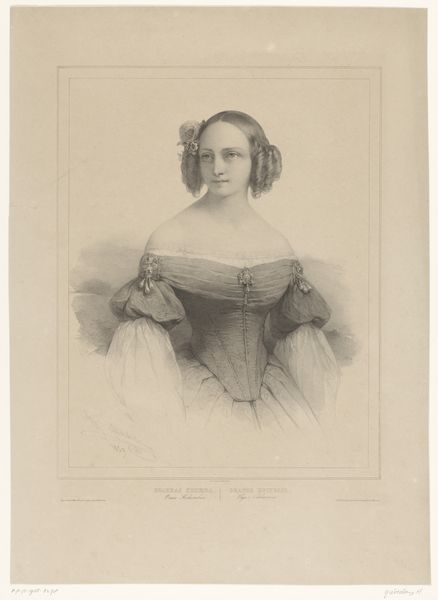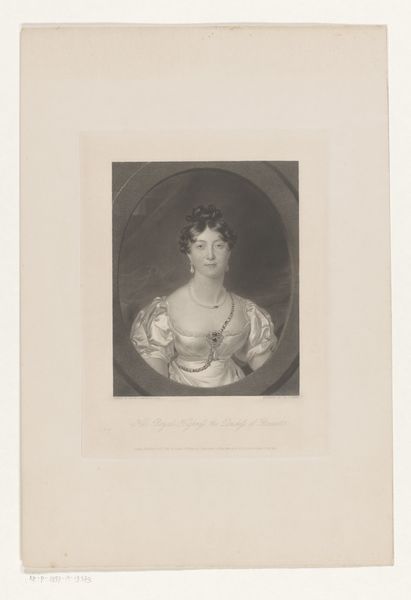
drawing, lithograph, print
#
portrait
#
drawing
#
lithograph
# print
#
figuration
#
romanticism
Dimensions: 302 mm (height) x 247 mm (width) (billedmaal)
Peter Gemzøe made this print of Fru Leth using engraving techniques sometime in the mid-19th century. It’s interesting to consider the role of portraiture within the institutions of 19th-century Denmark. The Danish Golden Age, as it's known, witnessed a surge in artistic and cultural nationalism, with artists seeking to define a distinct Danish identity. This portrait, with its emphasis on the sitter’s respectability and reserved demeanor, participates in the construction of social norms and ideals. The image operates through visual codes: the sitter’s dress, hairstyle, and jewelry all signal her social standing. Cultural references and historical associations would have been readily apparent to viewers of the time, reinforcing the values of the bourgeoisie. As historians, we look to archives, letters, and social histories to unpack the complex web of meaning embedded in artworks like this. What can it tell us about the changing role of women and the solidification of the middle class? Art, in this sense, is a mirror reflecting the social and institutional contexts of its creation.
Comments
No comments
Be the first to comment and join the conversation on the ultimate creative platform.
